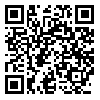Volume 9, Issue 1 (5-2025)
J Social Behav Communit Health 2025, 9(1): 1600-1606 |
Back to browse issues page
Download citation:
BibTeX | RIS | EndNote | Medlars | ProCite | Reference Manager | RefWorks
Send citation to:



BibTeX | RIS | EndNote | Medlars | ProCite | Reference Manager | RefWorks
Send citation to:
Shishebor Z, Sajjdnia Z, Sharafi M. Violin Plots: An Enhanced Tool for Data Visualization in Health Studies. J Social Behav Communit Health 2025; 9 (1) :1600-1606
URL: http://sbrh.ssu.ac.ir/article-1-274-en.html
URL: http://sbrh.ssu.ac.ir/article-1-274-en.html
1- Department of Statistics, College of Science, Shiraz University, Shiraz, Iran
2- Department of Statistics, College of Science, Shiraz University, Shiraz, Iran ,sajjadnia@shirazu.ac.ir
2- Department of Statistics, College of Science, Shiraz University, Shiraz, Iran ,
Abstract: (869 Views)
Statistical knowledge enables us to utilize appropriate methods for data collection, conduct accurate analyses, and effectively communicate results. Statistics plays a pivotal role in scientific discoveries, data-driven decision-making, and predictive modeling. Statistical plots serve as powerful tools for enhancing data visualization and facilitating data communication. By examining a statistical graph, underlying patterns and relationships within the data become more discernible.
Visualizations are a far more effective way of communicating statistical findings to a non-technical audience. Charts and graphs make complex data relationships much easier to understand than tables of numbers or statistical reports. Even for technical audiences, a well-designed statistical graphics can quickly convey the key insights. When we are dealing with a new dataset and do not have a specific hypothesis to test, visual analysis excels at revealing patterns, outliers, and potential relationships that might not be apparent from numerical summaries alone. Statistical tests assume a certain structure in the data; visual inspection helps determine if that assumption is justified. Statistical graphs like box plots, scatter plots, and histograms can readily highlight outliers that might be missed by statistical tests focused on central tendencies. These outliers might be errors or genuinely interesting data points requiring further investigation. It is crucial to remember that ocular and statistical analysis are complementary, not competing, approaches, so both should be used. Visualizations guide the choice and interpretation of statistical tests, while statistical tests provide a more rigorous quantification of observed patterns in the data. Using both methods together leads to more robust and reliable conclusions (Hullman et al., 2015; Tan & Shi, 2019; Wainer & Thissen, 1981).
Visualizations are a far more effective way of communicating statistical findings to a non-technical audience. Charts and graphs make complex data relationships much easier to understand than tables of numbers or statistical reports. Even for technical audiences, a well-designed statistical graphics can quickly convey the key insights. When we are dealing with a new dataset and do not have a specific hypothesis to test, visual analysis excels at revealing patterns, outliers, and potential relationships that might not be apparent from numerical summaries alone. Statistical tests assume a certain structure in the data; visual inspection helps determine if that assumption is justified. Statistical graphs like box plots, scatter plots, and histograms can readily highlight outliers that might be missed by statistical tests focused on central tendencies. These outliers might be errors or genuinely interesting data points requiring further investigation. It is crucial to remember that ocular and statistical analysis are complementary, not competing, approaches, so both should be used. Visualizations guide the choice and interpretation of statistical tests, while statistical tests provide a more rigorous quantification of observed patterns in the data. Using both methods together leads to more robust and reliable conclusions (Hullman et al., 2015; Tan & Shi, 2019; Wainer & Thissen, 1981).
Type of Study: Original Article |
Subject:
Education & Health
Received: 2024/12/11 | Accepted: 2025/03/23 | Published: 2025/05/18
Received: 2024/12/11 | Accepted: 2025/03/23 | Published: 2025/05/18
Send email to the article author
| Rights and permissions | |
 |
This work is licensed under a Creative Commons Attribution-NonCommercial 4.0 International License. |







